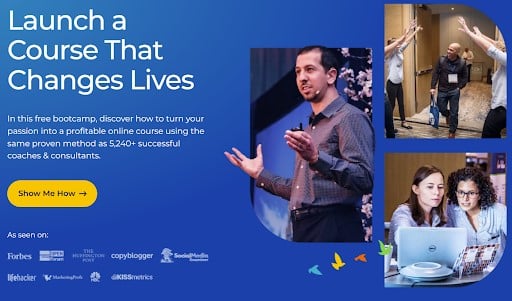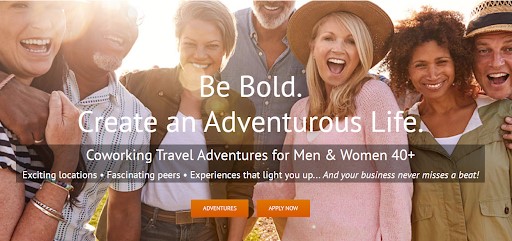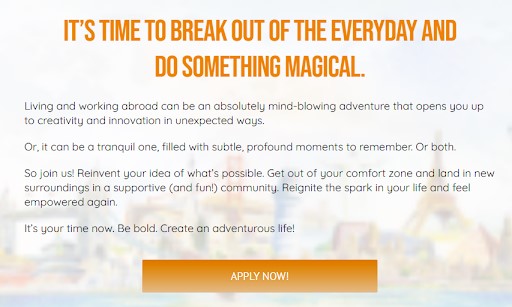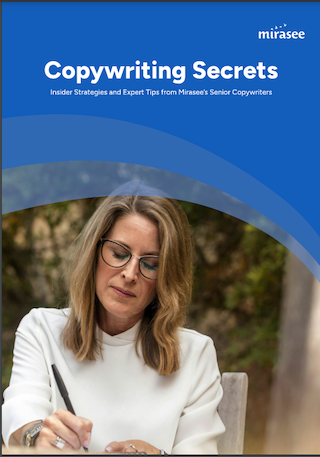How to Write Sales Copy That Converts: Top 10 Tips
Willy Wood
You’re standing at the edge of a chasm…
On one side, you—the entrepreneur, the coach, the consultant with an amazing product or service to offer. On the other side, your potential clients or customers.
Question is, how do you build a bridge so your customers can cross the chasm and buy?
…especially when the only tool you have to build that bridge is your words, your sales copy.
Choose the wrong words—no sale. Choose the right words—cha-ching!
That’s how crucial sales copy is to your business.
Now, we understand that, if you’re not a professional copywriter, writing sales copy that converts may seem like a daunting task.
But luckily, it’s not rocket science, either. Even if you don’t consider yourself “a writer,” you can use the tips in this post to greatly improve the quality of your sales copy—which ultimately means more cash in your pocket.
So let’s get started!
What is Sales Copy?
Sales copywriting is writing designed to persuade the reader to take a specific action—purchasing a service, downloading a piece of content, signing up for your webinar or course—any action that helps your business achieve its goals.
Your sales copy might be used on a product page, in an email, or in an online ad. It might be in paragraph form, list form, or an overlay on an image.
Whatever the vehicle for your sales copy and whatever form it takes, the best sales copy focuses on making an emotional connection with the prospect and showing them how they can benefit from whatever you’re selling.
The problem with a lot of sales copy is that it’s dry and boring, focusing too much on the technical features of the product or service.
Other businesses go to the opposite extreme and over-hype their products and services. This kind of writing often comes across as gimmicky and slimy.
Your goal should be to find that sweet spot between blah and hypey and write in such a way that you engage your prospect and give them a reason to keep reading.
So, how do you do that?
By following the tips we present in this article!
Consider the 10 tips below your “sales copy 101” checklist. Follow these best practices consistently and in no time, your copy will be outperforming 90% of your competitors.
10 Tips for Writing Sales Copy that Converts

1. Choose One Focus or Angle
You wouldn’t set off on a journey without a compass, right? The same applies to your sales copy.
Every piece of sales copy should have a single core message, a specific angle or focus.
To find that focus, identify one specific pain point, one goal, or one desire that your audience has. They might have secondary pain points, goals, and desires, but you need to focus on only one in your copy.
Then, identify what makes your offering uniquely positioned to help your prospect alleviate that pain point or achieve their desire. Focus your entire message around that.
That single message is your compass. Follow it and don’t deviate.
2. Know Who You’re Writing For
You can’t offer a solution to your audience’s challenges if you don’t understand them deeply.
Understand their needs, desires, and pain points. Ask yourself (or better, ask them) what keeps them up at night. Social media polls and customer surveys are two good ways to gather this information.
You need to know exactly what benefits your target audience wants before you can persuade them that your product or service can deliver those benefits.
Once you’ve done your audience research, use the data you’ve collected to create a customer persona for your ideal customer.
Give your persona a name. Imagine what this person is like, how they spend their days, and what their challenges are. How would they like their lives to change?
Then, keep your ideal customer in mind when writing your sales copy. This is a powerful tool to keep your writing on target.
And if you’d like to take a deeper dive into identifying your ideal customers and creating a customer avatar, check out our post on finding your target audience.
3. Use Emotionally Charged Language and Storytelling
There’s an old saying in sales that “people buy with emotion, then justify with logic.” So, the key to sales is to speak to the heart as well as the head.
Emotionally charged language and storytelling are two powerful ways to do that.
In your sales copy, you’re trying to get your reader to do something. But there’s inertia involved, and your reader isn’t going to take action unless you engage their emotions first.
The best way to do that is to tell a relatable story that addresses your reader’s specific pain points and resonates with their life experience.
- The story you tell could be a true story, such as a testimonial or case study showing how a customer used your product or service and changed their lives.
- Alternatively, you could tell your brand story and what led you to create your product or service in the first place.
- It could even be a fictional story or parable featuring a character like your customer avatar and how they found a product or service like yours and achieved the transformation they desired.
Avoid using AI-generated content, as it often lacks the emotional depth needed to engage readers, but use relatable language in your storytelling for maximum impact. For this you can use the accurate and free Attrock AI Content Detector that can help identify any AI-written content, ensuring your copy remains personal and engaging.
Establishing an emotional connection between you and a potential customer is challenging, but if you can pull it off, it will equate to a huge increase in leads and sales.
4. Opt for a Conversational Style
A conversational writing style makes your copy approachable and relatable—definitely something you want when you’re trying to convince someone to buy from you.
One of the best ways to achieve a conversational style is to use the “coffee shop test.” That is, write as if you’re speaking directly to one person (your ideal customer) across a two-top at your favorite local coffee shop.
This way, your language comes across as more conversational and personable.
Here are some guidelines for how this would look in print:
- Use contractions (“can’t,” “they’ll,” “let’s”) instead of spelling out the words (“cannot,” “they will,” “let us”). People use contractions in their everyday speech the vast majority of the time.
- Use informal language instead of formal, stuffy language.
- Use smaller words as opposed to words you’d find on the SAT. If there’s a simpler word or phrase for what you’re trying to say, use it.
- And don’t be afraid to use humor to engage your readers.
We also highly recommend that you use apps like Grammarly and Hemingway to measure and refine how “conversational” your copy is. Grammarly will catch misspellings, punctuation problems, and usage errors.
The Hemingway app identifies sentences that are too long or overly complex and suggests alternatives. It’ll also summarize the reading level of your copy (it’s a good idea to keep your copy at a 6th grade reading level or below).
5. Make Sure Your Copy is Easy to Read
According to research, a whopping 79% of people scan websites instead of reading word for word. They look for the information they think is important and then move on.
So, your goal should be to write sales copy that gives readers the gist of your offer without them having to work hard to find it.
To make your sales copy more readable, follow these tips:
- Use a larger font size—at minimum, 14px, preferably 16px.
- Break long sentences up into several short sentences.
- Use short paragraphs instead of long, formidable looking blocks of text.
- Use plenty of white space.
- Use bullet points (like these) or numbered lists to list features and benefits.
- Use subheadings to break your copy into smaller chunks to make it more digestible.
- Use all-caps text rarely. Lower case text is easier for readers to comprehend. PLUS, READERS FEEL LIKE YOU’RE SHOUTING AT THEM WHEN YOU USE ALL CAPS (see how that feels?).
- Use images to break up your text and add visual interest to the page.
Making your marketing copy easy on the eyes ensures that your readers can quickly find what they’re looking for—your main selling points—which makes it easier for them to say yes to your offer.
6. Create Engaging Headlines
An engaging headline is like an open door, inviting the reader to take a journey with you to learn more about your offer.
The goal should be to create headlines that grab the reader’s attention, stir curiosity, and/or promise a direct benefit.
And since studies have shown that people look at headlines for only a few seconds (if that) before deciding whether to continue reading, it’s crucial that you put some time into creating a good headline for your copy.
In fact, professional copywriters often say they spend as much time working on their headlines as they do on the rest of the promotion. They’re that important.
7. Focus on the Benefits
Your audience wants to know one thing: “What’s in it for me?”
That’s why it’s more important to focus on benefits (how the product or service changes your readers’ lives for the better) than on features (the bells and whistles included in your product or service).
For example, don’t just say your relationship course “includes 12 modules and a course workbook” (a feature); say it will “help you heal your relationship with your spouse so you can recapture that newlywed feeling” (a benefit).
Of course, you still want to communicate the features of your product or service, but you need to do so in a way that gets across how those features lead to the benefits the reader is looking for.
One way to do this is to use the “so that” hack. Here’s how it works…
Every time you find yourself talking about a feature, use “so that” to identify the benefit that feature leads to—then include the benefit in your copy.
For example, “Our patented herbal formula increases your metabolic rate” (feature) “so [that] you burn more calories, and those unwanted pounds simply melt away” (benefit).
8. Address Potential Objections
It doesn’t matter if you have the best product or service ever created; people will have objections.
The smart marketer identifies the most likely objections to the sale in advance and addresses them in the sales copy.
The reader gets their questions answered without even having to ask, and because they see that you’re not trying to hide anything from them, they come to trust you, which reduces barriers to purchase.
9. Cultivate a Sense of Urgency
You want your audience to act now rather than later. In fact, if they don’t act now, they will probably never take you up on your offer.
That’s why, if you want to write copy that sells, you need to create a sense of urgency.
You can do this through limiting the amount of time available to grab your offer (a ticking countdown clock) or by limiting the amount of products or services available (“only three spots left”).
If your prospect feels as though they might miss out if they wait, they’re far more likely to click and grab your offer (FOMO is real).
10. Don’t Forget Your Call to Action
Every piece of sales copy should end with a strong call to action (CTA). This is the end of the journey, so it’s time to tell your reader exactly what they should do next.
Make it clear. Make it strong. Make it compelling.
And if your CTA is currently a text link, consider using a button so it’s even more eye-catching.
Sales Copy Examples to Inspire You
Let’s look at a few quick examples of these sales copy tips in action.
Sales Copy Example 1
First, here’s a very short piece of sales copy for a bootcamp our company, Mirasee, offers.
- Notice that the audience is clear: entrepreneurs, coaches, and consultants.
- There’s a single focus—turning your passion into a profitable online course that changes lives.
- The headline makes a bold statement and promise.
- The benefits are clear—you can change people’s lives and make a profit at the same time.
- And one major objection the reader might have—“Can you really deliver on that bold promise?”—is answered by showing that many other people have taken the course (“the same proven method as 5,240+ successful coaches & consultants”) and by the statement “As seen on,” followed by the logos of reputable business brands such as Forbes.
And all of that is achieved with 35 words and a few logos!

Sales Copy Example 2
Our second example is for a unique program called Adventurous Life run by business coach Linda Claire Puig.
We won’t go through the whole sales page, but here are a few snippets of sales copy to give you a taste…
- First, there’s the attention-grabbing headline: “Be Bold. Create an Adventurous Life.”
- That’s followed by a clear statement of the audience (“Men & Women 40+”).
- The promise or big benefit is clear: you can travel the world, see exotic locations, and still run your business. Also, in the sub-headline you find other benefits listed: “exciting locations,” “fascinating peers,” “experiences that light you up.”
- Also note the emotionally charged language designed to get the reader jazzed up about the offer.

- In the next section of text, you see the continued use of engaging language and lists of benefits.
- You also see a bulleted list of characteristics of the perfect audience for this offer so the reader can self-identify as the perfect customer for the offer.
- Note also the urgency: “No More Waiting. Your Time is Now.” “Have an adventure now—not when you retire, not ‘someday,’ NOW!”

- In the final snippet from this promotion, below, you’ll see a lot of the techniques used again (emotionally charged language, focus on benefits, etc.), but the call to action language really cranks up. One powerful way to give your CTAs extra “punch” is to use imperative sentences (sentences that give the reader an instruction or command): “Join us!” “Reinvent your idea of what’s possible.” “Get out of your comfort zone.” “Reignite the spark in your life.” “Be bold.” “Create an adventurous life!” “APPLY NOW!”

These 10 Tips + Practice = Sales Copywriting Success
Sales copywriting is the journey from the invisible to the irresistible.
Sure, there’s some art to it, but it’s really more of a science—one that can be mastered with the right approach and lots of practice.
We’ve covered 10 essential tips that can transform your copy from blah to compelling.
Using these tips, you can write sales copy that persuades your prospects to act, even if you’re a beginner or don’t consider yourself a writer.
Use these tips as a checklist when you write sales copy and you’ll become a master in no time!
Elevate Your Copywriting Game!
Discover winning strategies and insider tips for writing words that sell - from Mirasee’s very own expert copywriting team!